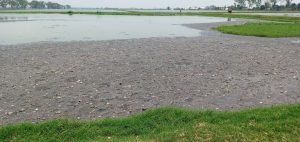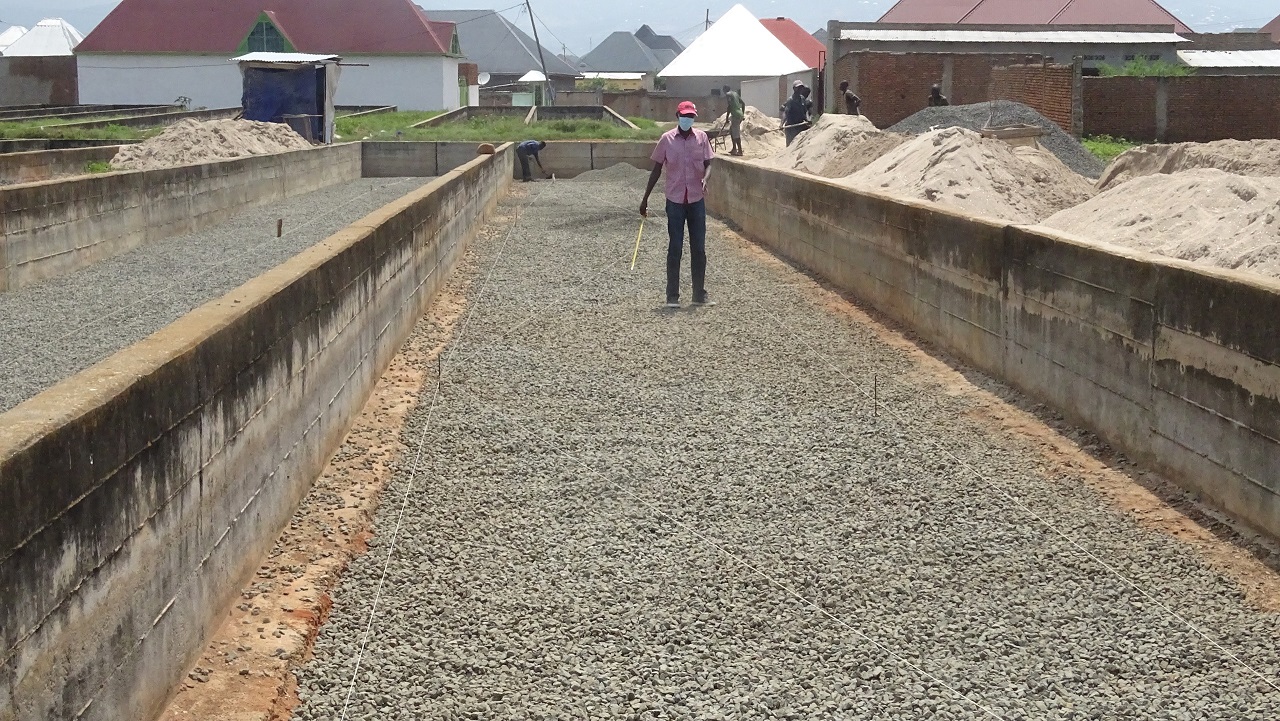 The Lake Tanganyika Water Management project, funded by the European Union and implemented by Enabel, the Belgian Development Agency, in collaboration with Lake Tanganyika Authority, has just completed the rehabilitation of the two first drying bed of the Buterere treatment plant. This constitutes an important step that allows testing the sludge’s drying capacities under the climatic conditions of Bujumbura. Furthermore, the rehabilitation of the other drying beds is planned. Indeed, the Latawama project makes a substantial investment in rehabilitating the 20 sludge drying beds, with a total capacity of 3,000 m3.
The Lake Tanganyika Water Management project, funded by the European Union and implemented by Enabel, the Belgian Development Agency, in collaboration with Lake Tanganyika Authority, has just completed the rehabilitation of the two first drying bed of the Buterere treatment plant. This constitutes an important step that allows testing the sludge’s drying capacities under the climatic conditions of Bujumbura. Furthermore, the rehabilitation of the other drying beds is planned. Indeed, the Latawama project makes a substantial investment in rehabilitating the 20 sludge drying beds, with a total capacity of 3,000 m3.
Besides, the project will also characterize settled sludge to have the necessary and indispensable information to select the extraction methods of sludge and assess the possibilities of its recovery in agriculture or other uses. Ultimately, OBUHA, the Burundian authority in charge of urbanization, sanitation, and construction, will have the capacity to manage sludge (extraction, drying, eventual recovery), an essential condition for better wastewater treatment. A management plan for the Buterere Wastewater Treatment Plant and Wastewater Performance Monitoring System, including many other improvements, is currently being developed by the Latawama project.
 As a reminder, the Buterere WWTP is a microphyte lagoon system. It consists of 2 treatment lines, each composed of 3 basins (anaerobic basin, facultative basin, and maturation basin). The ponds cover an area of 40.7 ha.The settling of heavily loaded raw wastewater at the anaerobic basin generates a large sludge volume; it is currently estimated at 40,000 cubic meters. This volume impairs the functioning of the WWTP.
As a reminder, the Buterere WWTP is a microphyte lagoon system. It consists of 2 treatment lines, each composed of 3 basins (anaerobic basin, facultative basin, and maturation basin). The ponds cover an area of 40.7 ha.The settling of heavily loaded raw wastewater at the anaerobic basin generates a large sludge volume; it is currently estimated at 40,000 cubic meters. This volume impairs the functioning of the WWTP.
To restore and guarantee the treatment plant’s expected performance, this volume of sludge must be extracted, dried, and valorize if its physical and chemical characteristics permit.
More information to be published soon…



